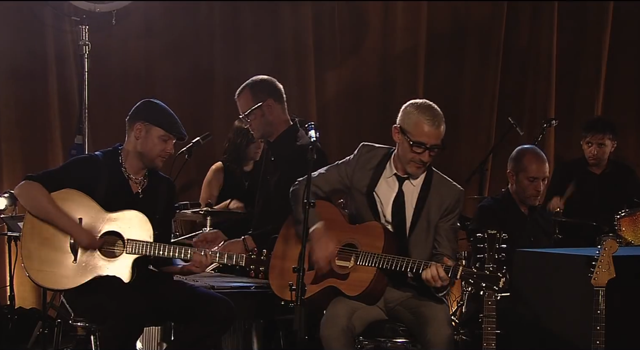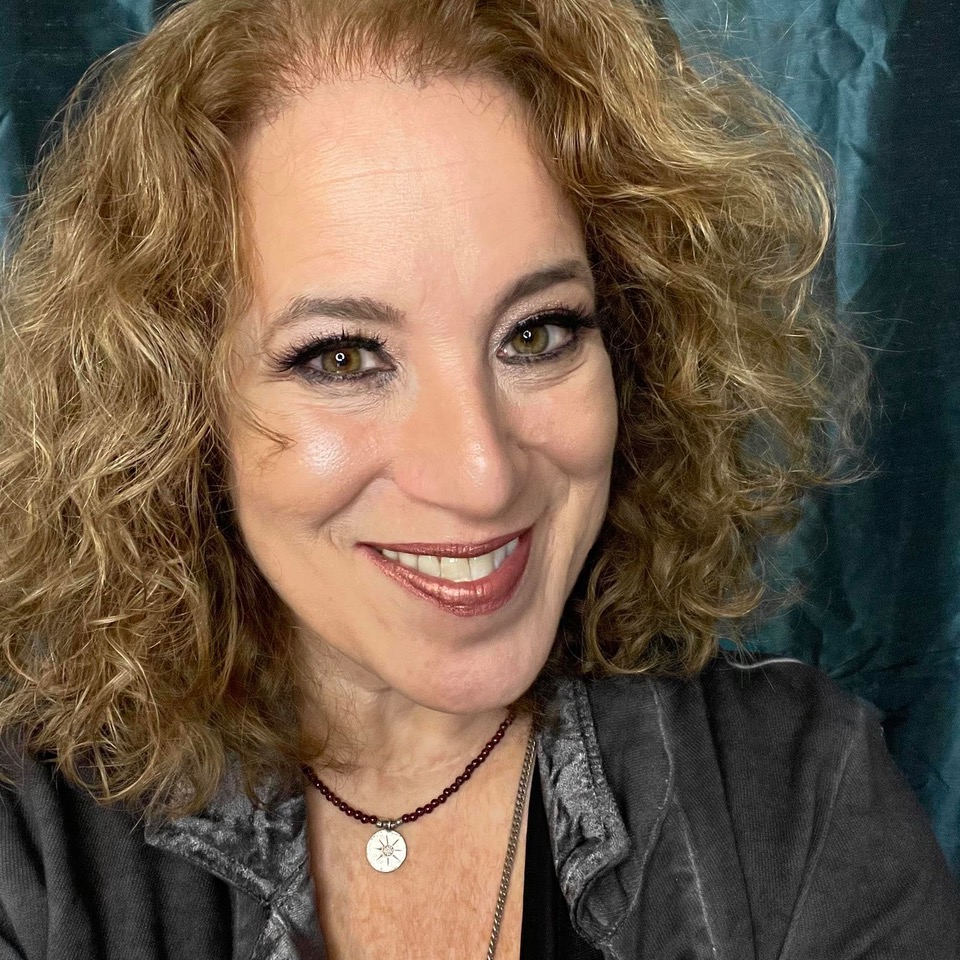Interview: Tony McGuinness on ‘Above & Beyond Acoustic’

Above & Beyond, one of the UK's biggest dance acts, has gone unplugged with their wonderfully creative Above & Beyond Acoustic album.
A somewhat unique entry in the world of acts going acoustic, this masterfully performed and recorded collection of the trio’s best-loved songs is really worth a listen.
This collection is not something I’d necessarily classify as “dance music,” I’d just say it’s incredibly good music.
For this acoustic project, band members Tony McGuinness, Jono Grant and Paavo Siljamäki are putting aside their CDJs and lighting rigs to showcase their deeply-rooted musicianship and classical training, and the result is stunning.
Above & Beyond Acoustic contains the studio recordings behind their already legendary acoustic shows at London's Porchester Hall and LA's Greek Theatre. The recording hit the top of the iTunes US Dance Album Chart.
Partnering with VICE's Thump channel on the production and filming of the London shows, the Above & Beyond Acoustic project was spearheaded by a full length documentary concert film. Working with three singers, a string quartet, harpist, drummer and bassist, Above & Beyond Acoustic saw each of the three band members take a central part in both recording and performance - Tony McGuinness sings and plays guitar, mandolin and ukulele, Paavo Siljamäki plays the grand piano and cello, and Jono Grant plays the Rhodes piano, guitar and vibraphone.
Here I sat down with Tony McGuinness to talk about the album, the process and more!
Get The Pick Newsletter
All the latest guitar news, interviews, lessons, reviews, deals and more, direct to your inbox!
I found it very interesting that you decided to go ahead and create this acoustic album. What got that ball rolling?
A number of things. The first strand was trying to find a way to perform live that satisfied us as musicians, and with our singers. We work in an area where the music that we normally produce is extremely loud. That is actually is one of the reasons why trying to perform electronic music to make it sound like the record is very, very difficult to do.
We got the idea that maybe if we did it in a quieter setting where the singers would be able to hear themselves or the arrangements were something more live-based, more old-fashioned rock and roll, really. And we did a little gig in a hot air balloon, just acoustic guitars, a little sample piano, and a singer. It was great because the expectation, of course, was not the same as it might be in the club.
That’s crazy!
We thought it would be nutty to take it out of the expectation that people have of the full-on dark room, you know, records that we play in clubs. And take it somewhere, like on MTV Unplugged. Put it somewhere brighter and lighter.
But then the added thing was to give that a bit of a spin. You can sit down with an acoustic guitar and very ably strum four chords and sing a song that you’ve written. But what we wanted to do was give it a bit of a spin. So while based in the acoustic world, it had a certain wit and style. We landed somewhere between the 1960s of John Barry and the imaginary 1980s of Angelo Badalamenti. And there’s a tiny bit of Neil Young and those guys in there, too.
We have this sort of sound with the strings, and the harp, and the vibraphone, and the other odd bits of other things that we put in there, such that the acoustic guitars were not the lead instrument. They add a certain rhythm, a certain harmonic complexity. We used real acoustic piano, onstage we have a Rhodes piano, which is not acoustic, but it’s old enough to be! We have harp, strings, a proper live drum kit, not samples, and then up to three acoustic guitars playing at one time, which is one of the nice things of the arrangements on this record.
View the concert film live from Portchester Hall:
I’ve seen a lot of bands do an acoustic tour, but not in the dance genre. But I feel like when I listen to your album, it doesn’t necessarily come across to me as “dance music.” It has this lovely quality to it that is sort of crossed-genre…
That’s exactly right. iTunes classified it as dance so that our fans could find it. That’s where they’ll be looking. Of course, all music is dance music, arguably. I’d love to see people dancing to this, but I can’t imagine how they’d do it. We’ve half-timed all the songs. To be honest, the way that we tend to write them – in half-time and then speed them up for the dance record. It had gone back to the original form, in most cases.
Part of the appeal of dance music to me is the way that they’re produced and the dance music aspect to it. But I think underneath that, or above it, it depends on which way you’re looking, the song has always been incredibly important to us and is written on acoustic guitar, or acoustic piano, then transformed into dance music. And now re-transformed back into something more similar to how it was written. It’s kind of an interesting exercise, like you said, something that nobody else is doing, really, or nobody I’ve seen, at least.
Yeah, I agree. I think maybe that’s why this works for you, because the songwriting itself is so strong.
Hopefully, it does. It’s lovely that you say it does. We didn’t want to just do something where the acoustic backing was almost a non-backing, in a way, sitting there with an acoustic guitar and singing the top line of the song. We wanted to do something where the backing had more beauty and more depth while keeping it 99% in the acoustic realm, so everything we played is made of wood and a bit of string strung across it. And that in the dance music is fairly alien. The guitar arrangements was very well thought through and often very difficult to play to get the timing right.
Can you talk for a minute about the guitars and gear you used?
We became huge fans of Taylor guitars. In this process, I went out looking for acoustic guitars. I had one at home, an old Takamine, for ages. We were in guitar for the studio and I went into about 15 acoustic guitar shops in this very famous road in London, Tin Pan Alley, around there in central London. We were trying to decide and figure out how to buy the right guitar because once you played five or six, it becomes quite challenging.
Then I picked up this Taylor 414 just strummed eight chords on it, and suddenly I thought, “This is the thing.” It throws out a hint of the acoustic guitar palette perfect to fit in our record. As part of a four-piece band or part of a dance arrangement or part of a 15-piece band, the nature of the Taylor guitars and the presentation that we needed was perfect. I think when we played at the Greek Theatre, we had about 15 guitars and I think 14 of them were Taylors.
So you recorded this acoustic concert on video, and you’ve performed it live elsewhere as well?
Yes! We had a couple of dates at the Greek Theater on hold and it felt a shame to waste the Greek Theater on a DJ show. So we took the band across to America and did two sold out nights at the most prestigious venue.
But, to be honest, we got to get on with our day job. We’re back to writing and recording an electronic album now. But this is like a beautiful Rolls Royce that we know it worked perfectly. We polished it, we put it in the garage, and in a couple years time, when our new album’s out and the songs from that are well-known, we can incorporate them into round two of the acoustic project. And I’d very much like to tour again, it’s so much fun. It’s a nice change from our day job – or night job, I suppose.
I wanted to ask you about the recording process. What challenges did you have that took you out of your usual method?
Well, to be honest, we do use acoustic instruments and we do record them but in this instance, we decided to outsource the actual recording and producing to a guy called Bob Bradley, who’s an old friend of mine. I was in a band with him before Above & Beyond started, and it’s been lovely to reconnect with him and make him part of our lives. I recorded my guitar with him.
Find out more at aboveandbeyond.nu
Laura B. Whitmore is the editor of Guitar World's Acoustic Nation. A singer/songwriter based in the San Francisco bay area, she's also a veteran music industry marketer, and has spent over two decades doing marketing, PR and artist relations for several guitar-related brands including Marshall and VOX. Her company, Mad Sun Marketing, represents Dean Markley, Peavey Electronics, SIR Entertainment Services, Music First, Guitar World and many more. Laura is the founder of the Women's International Music Network at thewimn.com, producer of the She Rocks Awards and the Women's Music Summit and co-hosts regular songwriter nights for the West Coast Songwriters Association. More at mad-sun.com.
Laura B. Whitmore is a music industry marketing veteran, music journalist and editor, writing for Parade.com, Guitar World, and others. She has interviewed hundreds of musicians and hosts the She Rocks Podcast. As the founder of the Women’s International Music Network, she advocates for women in the music industry and produces the annual She Rocks Awards. She is the Senior Vice President of Marketing for Positive Grid, making the world safe for guitar exploration everywhere! A guitarist and singer/songwriter, Laura is currently co-writing an album of pop songs that empower and energize girls.
“I knew the spirit of the Alice Cooper group was back – what we were making was very much an album that could’ve been in the '70s”: Original Alice Cooper lineup reunites after more than 50 years – and announces brand-new album
“Such a rare piece”: Dave Navarro has chosen the guitar he’s using to record his first post-Jane’s Addiction material – and it’s a historic build





![[from left] George Harrison with his Gretsch Country Gentleman, Norman Harris of Norman's Rare Guitars holds a gold-top Les Paul, John Fogerty with his legendary 1969 Rickenbacker](https://cdn.mos.cms.futurecdn.net/TuH3nuhn9etqjdn5sy4ntW.jpg)





